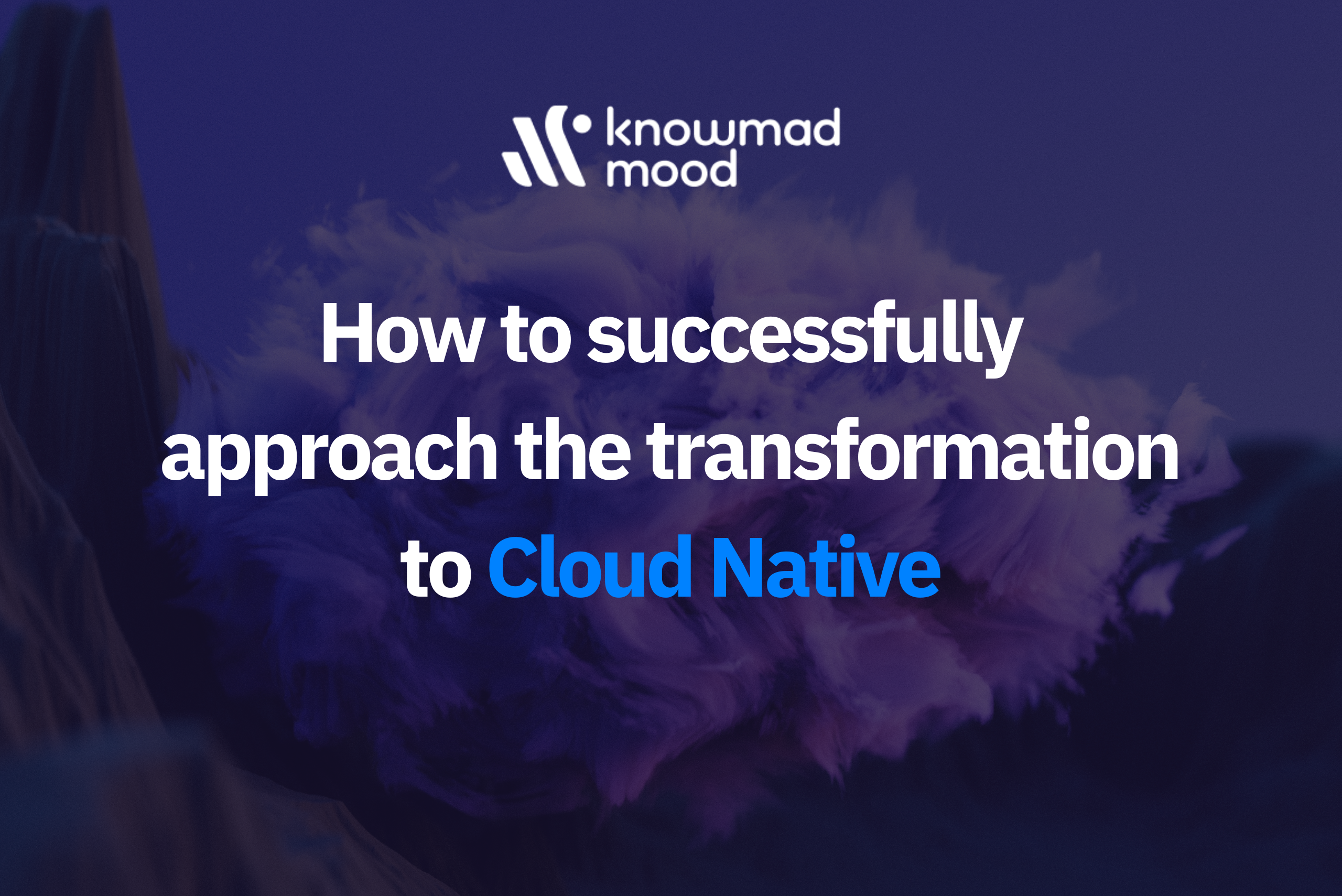
How to successfully approach the transformation to Cloud Native
Software development is rapidly moving towards new models that maximize the quality of applications and optimize the process. One of these new paradigms is Cloud Native, which is based on the benefits of cloud computing such as scalability and agility in order to adapt the pace of software development to today’s changing business context. According to Gartner, more than 95% of digital products will be developed on cloud-native platforms by 2025, up from 30% in 2021.
However, as with any digital transformation process, there are still a number of challenges to be faced and, therefore, for the process of moving to Cloud Native to be successful, it is essential to develop a defined and concrete plan. knowmad mood, a leading technology consulting firm in digital transformation, offers some keys to address this process so that companies can achieve technological excellence in this way:
Structural changes in the company and in the use of technology
One of the first steps in the digital transformation of companies is to change the way they identify business needs, putting technology at the center of their strategies. In this way, companies that follow a more traditional model assume ownership and accountability for all aspects of technology, from infrastructure to software. However, more modern companies that wish to make the ‘journey to the cloud’ must make more profound changes and adopt a modern style of application development in terms of architecture such as microservices or other technological alternatives such as Serverless, which eliminates the need to manage infrastructure; technologies such as containers, Platform as a Service (PaaS) in which a cloud provider is available for development tools, infrastructure and operating systems, or database transformation, which allows raw data to be converted from one source or format to a different one. On the other hand, it will also be necessary to adopt guidelines such as 12-Factors; and of course, a methodology of best practices and principles that support the entire process, such as the DevOps philosophy.
Well known benefits and challenges of this transformation
Before tackling the transformation to Cloud Native with the required effort, it is essential to understand the benefits obtained from this process, as well as to assess whether the company has the capabilities to deal with it. There may be some challenges or blockers that prevent the fulfillment of some of the objectives to be achieved and, therefore, it is necessary to be alert to detect them as soon as possible. For example, one of the biggest challenges when moving to the Cloud may be the regulatory compliance of hosting or residence of certain data in case it is necessary to keep them in a local data processing center (DPC) or located in a certain country or region.
Detect risks on the road to Cloud Native
All these structural changes, in turn, also imply a transformation in the communication flows, the distribution of roles and the way of executing the various tasks within the company itself. In many cases, the reorganization of responsibilities, teams and roles is precisely the reason for failure or not achieving all the objectives set in the first place, at the moment when the new operating models to be adopted are defined, including the techniques and processes that will lead the company to meet its targets. A company such as knowmad mood, a leading company in digital transformation for companies, can help to detect risks such as this one and put the necessary measures in place as a factor that will facilitate the achievement of success.
Define the strategy
Once it is accepted to start the transformation process, it is necessary to evaluate what will be the best strategy to follow. Therefore, at this point there is, for example, the possible need to form -or reformulate- the necessary teams to guide and execute the entire transformation. But, above all, the possible need to review the company’s catalog of applications and to classify, reorganize and manage these assets. In this regard, it will have to be decided which ones will be maintained, which ones will be migrated or which ones will evolve or modernize, undergoing another transformation process. Once this process has been completed, the situation and the associated costs must be re-evaluated and a decision made as to whether or not to complete the transformation of the assets that were only maintained or migrated.
Assess the results of implementation and follow-up
Finally, once the transformation plan and the journey to the Cloud have been executed, it is essential to assess whether the proposed objectives have been achieved. If not, it is necessary to detect the reason and, thus, modify some points of the plan. Therefore, it is necessary to verify the downtime, the configuration of the services, the possibilities of grouping or disaggregation and, finally, to decide whether to continue with the implementation of the plan. Also, during the execution time, it is necessary to periodically review the process and continuously monitor to check if it is necessary to make any adjustments or changes to the plan followed, in order to constantly improve the entire Cloud environment.
“The benefits of adopting the Cloud Native paradigm for the development and execution of applications are undoubtedly significant, taking into account the great need of companies today to improve the efficiency of processes, as well as to increase the security of the platform itself where the software is built. There is no doubt that it is not an easy task, so it will be necessary to count on a technological partner like knowmad mood, with extensive experience and knowledge of the various challenges and blockers that must be faced throughout the process so that the company can finally achieve its objectives in a completely satisfactory manner,” says Juan Mario Rodero, Cloud and Infrastructure Business Development at knowmad mood.

